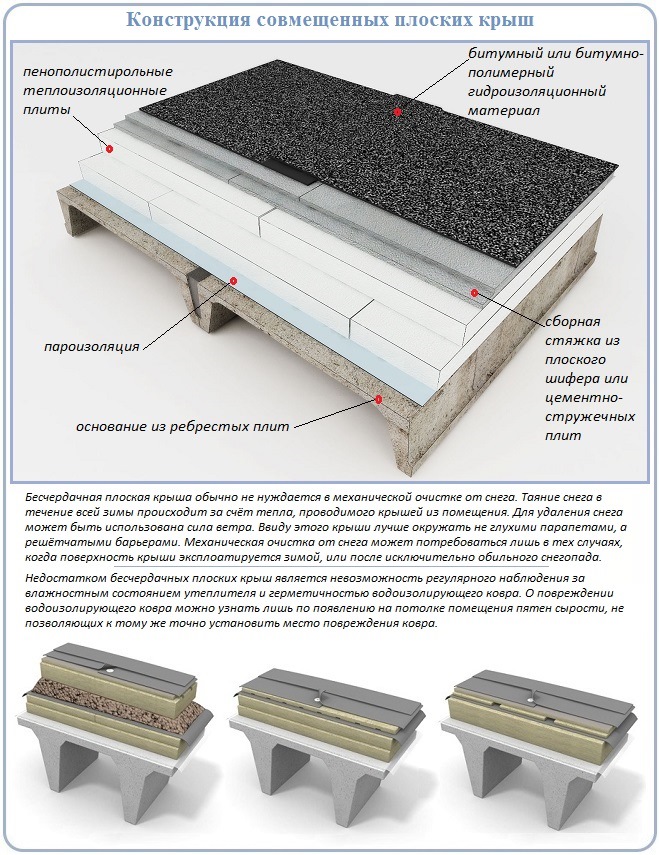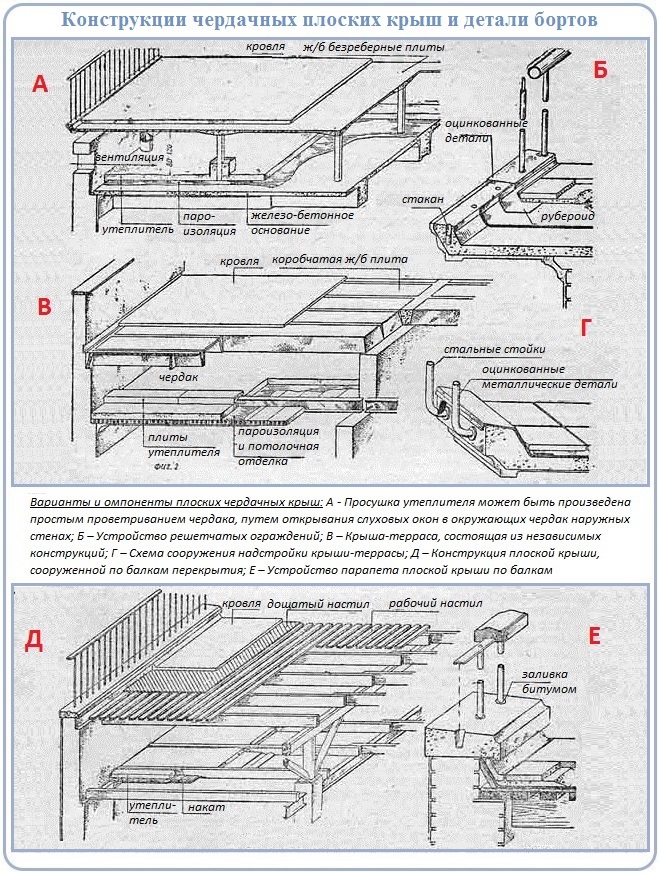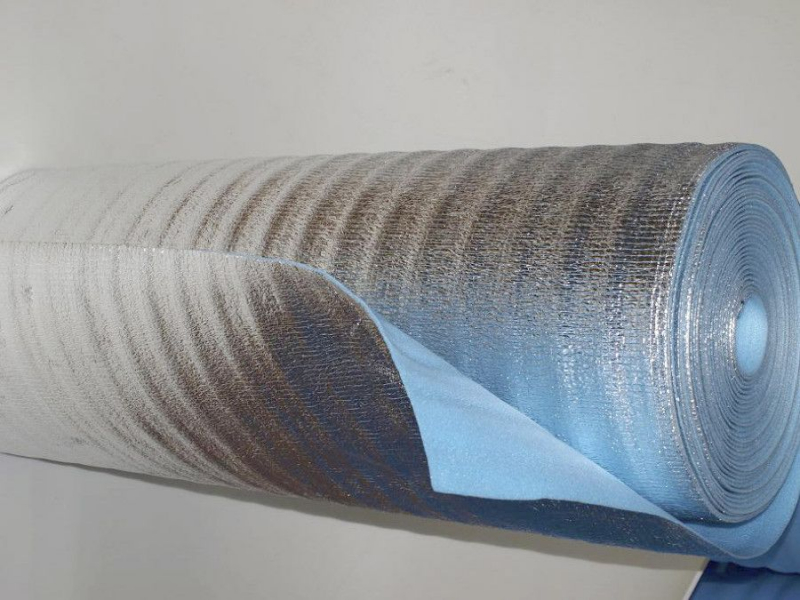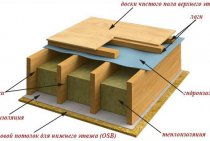Do-it-yourself wall insulation step by step technology
Heat loss through the walls of the house can reach 30% of the total heat loss, so one of the main stages of building thermal insulation is wall insulation. Mineral wool is often chosen as a heater for walls. Mineral wool is made from melted glass, rocks or slag, resins are used as a binder. The material has a fibrous structure, and, depending on the purpose, the direction of the fibers may be different.
Wall insulation with mineral wool
Wall insulation from the outside with mineral wool has a number of advantages:
- This is a relatively cheap insulation with low thermal conductivity;
- Mineral insulation has good sound-absorbing characteristics;
- Mineral wool does not support combustion, therefore it can be used for insulation of easily combustible structures;
- This material is vapor-permeable and does not create the effect of a thermos, the building "breathes";
- Mineral wool is easy to install - the insulation is sold in the form of mats or rolls, you can choose the most convenient option;
- Depending on local conditions, you can choose the required thickness of the insulation;
Mineral wool does not rot, is not susceptible to damage by fungus, microorganisms and rodents.
The disadvantages of mineral wool include the deterioration of its heat-insulating characteristics when wetted, so it must be protected from atmospheric moisture and condensate. In terms of environmental friendliness, mineral insulation, operated under normal conditions, does not pose any danger, since the release of harmful components occurs only when mineral wool is heated to 300 degrees or more.
The choice of the thickness of the insulation is made using a heat engineering calculation, while taking into account the thermal conductivity of the wall material, their thickness, as well as the normative thermal resistance of the walls for a particular region. For a simplified calculation, you can use the table.
Recommendations for the thickness of the insulation in different regions of Russia
Technology of wall insulation with mineral wool
- The preparation of walls for laying insulation depends on the material from which they are built. Wooden walls must be impregnated with an antiseptic to avoid damage to the log house by microorganisms. Areas damaged by rot, fungus, mold must be thoroughly cleaned and impregnated with appropriate solutions - after laying the insulation, access to them will be impossible. It is enough to free brick and foam concrete walls from peeling plaster and paint. If the walls are damp, they must be thoroughly dried. The platbands and slopes of the windows must be dismantled, as well as fasteners and decorative elements that can damage the vapor barrier and insulation layer from the walls.
- A layer of a vapor-permeable membrane is placed under the mineral insulation. The film is positioned so that the vapor-permeable side faces the wall of the house, and the smooth side faces the insulation. The vapor-permeable membrane is necessary in order to ensure the removal of water vapor from the walls of the house through the insulation. It is allowed to lay mineral insulation on even walls without first laying the membrane film.
Laying a vapor-permeable membrane under mineral wool
Horizontal rail under the bottom layer of mineral wool
The process of laying mineral wool
Windproofing is installed on top of the mineral wool layer
The process of creating a ventilated facade
When the walls are insulated from the outside, their thickness increases, so you will have to install new window slopes, window sills, as well as trim and trim elements. It is better to purchase them immediately when buying a ventilated facade.
Insulation of walls outside with mineral wool is one of the most popular ways of thermal insulation of buildings. The popularity is due to the low thermal conductivity of mineral wool, due to which most of the heat remains inside the building, as well as the environmental friendliness of the material, its ability to remove moisture from the inside of the house. In addition, mineral wool is an excellent sound insulation.
Other materials are also used to insulate walls, for example, polystyrene foam or extruded polystyrene. These methods are used for plastering, since slab insulation is an excellent basis for plastering.
The composition and properties of the foil material
This insulation consists of two layers - a base and a reflective coating. As a basis, classic heat insulators are used - foamed polyethylene, expanded polystyrene, mineral wool and other materials. The reflective coating is a polypropylene metallized film or a thin layer of aluminum foil. The thickness of the insulation directly depends on the type of base.
Foil insulation for the floor consists of two layers
Varieties of heaters
Foamed polyethylene insulation has a thickness of 2 to 10 mm and is available in rolls. It is usually used during the installation of a "warm floor", with further pouring of the screed, and as an insulating substrate for some types of floor coverings. Especially popular is self-adhesive material, the laying of which takes a minimum of time. The insulation has many varieties, of which the most popular are Isolon, Ecofol, Folgoizol, Penofol and Isoflex.
Insulation based on fiberglass and mineral wool has a thickness of 50 to 100 mm, is commercially available in the form of rolls and plates. It is used for insulation of interfloor ceilings, thermal insulation of baths and saunas. Foil-coated basalt insulation has increased heat resistance, but has one drawback: it contains phenol, which is unsafe for human health. The most popular brands of insulation: Knauf, Rockwool, Parok, Izover.
Foil insulation Rockwool
Heat insulator based on expanded polystyrene is produced in the form of rigid plates covered with foil. It is used when laying a warm water floor, as well as for thermal insulation of surfaces subject to dampness and heavy loads. For the convenience of laying heating pipes, special red markings are applied to the foil coating.
Properties of heaters
Foil heat insulators have the following properties:
- high reflectivity;
- resistance to temperature changes;
- moisture resistance;
- excellent steam, hydro, sound and heat insulation performance;
- resistance to mechanical stress;
- durability;
- light weight;
- ease of installation.
Floors with such insulation will never become damp, will not require treatment with protective agents, and will last much longer.
Most foil heat insulators do not contain carcinogenic components, therefore they can be used in any room, in addition, they reflect radiation, which is now important
Aluminum foil reflects heat very well
The type of coverage matters a lot. Aluminum foil perfectly reflects heat, but is destroyed by alkalis in concrete, and metallized film is not susceptible to such exposure. That is why insulation with an aluminum layer is not used under a concrete or cement screed. The thickness of the reflective layer is no less important: some manufacturers simply spray over the heat-insulating base, which significantly reduces the effectiveness of the insulation. The thinner the layer, the easier it is for heat radiation to pass through it.
How to insulate a brick wall
When using foam, the walls are pre-plastered, this is a mandatory procedure.After the surface dries, it needs to be leveled, putty is used for this. Putty can be applied to brick walls in one layer, after which the waterproofing material is laid. Do not neglect waterproofing, the foam is susceptible to moisture and can rot due to condensation.
It is worth remembering that the glue is applied to the wall itself, after which foam sheets are applied to it
It is important to avoid gaps that do not contribute to the preservation of heat. Lastly, a vapor barrier material is laid on the foam
Mineral wool on brick walls is mounted in the same way as on concrete walls. Despite the high characteristics of the heaters used, it is worth considering that it is better to choose extruded polystyrene foam for concrete walls.
Other options are also suitable, but subject to the fastening of a vapor barrier material. But for brick walls, foamed polystyrene foam is most preferable.
Before deciding on a heater, you need to know what characteristics this material should have:
If the selected insulation has all of the above qualities, then the result will really please, of course, if the installation is carried out correctly.
How is the installation done
Do not be alarmed, the installation of insulation has already been done independently by a variety of people. There is a proven step-by-step scheme that will allow you to make durable and reliable insulation
To begin with, the insulation laying technology involves some precautions - work must be done in:
- respirator;
- glasses
- cap or hat;
- hood;
- gloves should always be on the hands;
- after the work is completed, the clothes are washed separately from the rest.
It is not difficult to follow these rules, but they will raise the level of comfort and safety in the ongoing work to the limit. Note that many people ignore the use of a respirator, which is a big mistake - there is something to breathe in, and then you will need to seek help from a doctor, and it’s hard to imagine what it can result in. The key instruction for laying insulation on walls is the following sequence of actions:
- we start by very carefully foaming all the seams and cracks, of which there are usually a very large number on the outer sides of the walls. Mounting foam is perfect for this and it is easy to use, so you will be satisfied with the result;
- next, we must take care that the insulation fits very tightly to the heated part of the house and fills the entire space inside the frame. If there are some voids around the edges of the wooden frame, everything is fixed, even if this place is made of small chopped fragments of insulation;
- then we check that the edges of the insulation are not wrinkled inward - everything must be strictly parallel;
- we check all connections - the insulation is laid end-to-end, even a small gap is a huge loss in the quality of insulation. If the insulation is laid in several layers, this is done as when laying bricks: a new layer overlaps the previous joint;
- Next, you need to take care of the placement of the insulation even behind the junction box, behind the wires and other elements - there should not be any gaps or gaps at all;
In the event that you acted carefully and responsibly, you will need to close the insulation with the material that you have chosen for this, but this is a completely different task, it has its own subtleties and rules - the insulation for your home is completed and a cozy winter awaits you.
Errors when laying fiberglass
The reinforcing layer of wall insulation provides protection against mechanical damage. It is made of fiberglass and reduces thermal deformation, increases strength and prevents cracking.
The mesh must be completely immersed in the adhesive layer.
It is important that the mesh is glued without folds.We also do not recommend using cheap Chinese nets.
They are not alkali-resistant, which will, over time, corrode it with mortar, which means that the plaster layer will not be sufficiently protected from temperature and mechanical deformations.
In places vulnerable to loads, an additional layer of reinforcement is performed - in all corners of window and door openings, mesh strips of at least 35x25 in size are glued at an angle of 45 °. This prevents the formation of cracks in the corners of the openings.
To strengthen the corners of the house - corner profiles with a grid are used.
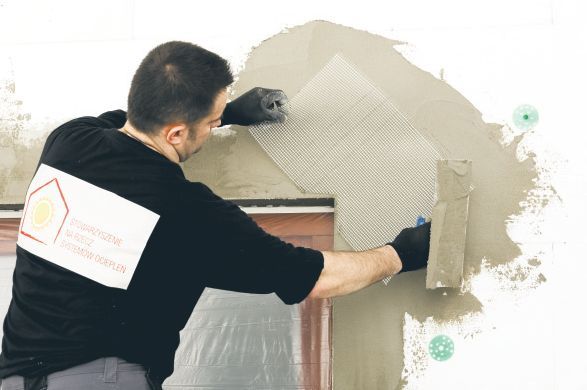 |
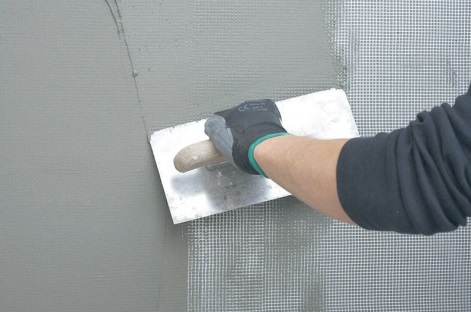 |
Material selection
The construction market has a huge amount of materials that can be used as insulation. At first glance, it is very difficult to make a specific choice in favor of one of them. Insulation should be selected not only in terms of cost, but also in terms of quality.
Each of them is capable of performing various functions and tasks during operation, which should be given special attention. There are several main criteria that are paid attention to when visiting a store:
- Ecological purity. The device and insulation of floors should not have a negative impact on the environment and on a person in particular.
- With a high degree of vapor permeability and resistance to fire and elevated temperatures.
- Resistance to solar exposure, high levels of humidity and temperature changes in the room.
- Ease of laying insulation on the floor, as well as convenient use.
For this reason, it is worth considering what materials are best to choose in order to properly arrange warm ones with your own hands. For a particular room, they will vary. It can be a bath, a balcony, an apartment, houses, etc.
Attention should be paid to the possible loads on the floor base during operation, as well as the properties of the environment. Insulating materials exhibit their qualities in different ways.
Among the popular ones you can choose:
- Mineral wool, as well as fibers, glass wool.
- Light mixes based on cement and additives. Here, expanded clay is mainly chosen.
- Cork, chipboard, dry sawdust, ecowool,.
- Insulation of the concrete floor with foam.
- Insulation in liquid form - paint that is able to create a porous layer on a surface with a thickness of 5-7 mm.
- Materials with a foil side, foam, polymer materials.
Glass wool is not intended for wet rooms, as it can absorb it very well
For this reason, it is best to pay attention to other materials.
Direct choice of insulation
To finish the roof with the best material, you should understand the qualitative characteristics of popular sources:
Mineral wool. Mineral wool is obtained by melting mineral substances of rocks. This source appears to be an exemplary insulator. Sold in the form of rolls and plates, has a high density. Mineral wool is used by the main part of the population, because it has a low price.
Glass wool. This raw material resembles the previous material in its functionality. Produced from the remains of glass production facilities
However, installation work must be carried out with the utmost care, for this you should wear a protective suit. The material is distinguished by high rates of heat retention.
Styrofoam
Such a heater is characterized by a cellular base. Produced by foaming polymeric material. It has low density indicators, but the level of isolation from extraneous sounds is not bad. On sale you can find only the tiled form of the material. With a low price, it has good insulating performance.
Extruded polystyrene foam. This source is similar in composition to foam, but it has a much better level of heat retention.This is due to the use of different manufacturing methods. The compared option under the influence of external factors of a mechanical nature quickly becomes unusable, which is not observed in extruded polystyrene foam. It has a strong cellular structure, its bubbles are filled with gas, united by a molecular bond. The material is water and steam impermeable, it has excellent thermal insulation qualities.
In the process of laying insulation components, cotton-based materials are often used, which have good absorption rates for extraneous sounds.
However, with an increase in the level of humidity, mineral wool changes its performance, and such metamorphoses do not differ in the best performance. This material needs the construction of a layer of hydro and vapor barrier.
When choosing a material in a store, you need to pay attention to the packaging. Lack of tightness can adversely affect its quality.
The raw material may become damp. Therefore, when buying, it is worth choosing a surface with a sufficient indicator of moisture resistance.
The priority direction in terms of flammability is class G1. It will not allow the fire to spread over long distances. To answer the question of which insulation is the best, it is worth noting that it will be one that is distinguished by a sufficient price, ease of installation and the desired effect.
Frame installation
If, before starting work on the installation of insulation, you did not have a frame ready for filling, then you should not be afraid of it. It is created using a fairly simple technology that requires the use of wooden blocks, usually 50x50 mm in size. They are mounted vertically and at a distance of 580 mm from each other, so that mats or insulation boards fit perfectly here. The thickness of the insulation is 50 mm, and the width is 600 m
This is very important, if you make a mistake, you will have to cut off the edge of the insulation, do you need additional work that could have been avoided without losing quality? If you have mats with a width of 1200 mm, just cut them into 2 parts, and you don’t need to expand the frame - then the insulation will not be firmly attached. It is quite important to be demanding about the strength of the frame, usually people think about insulation, forgetting that the frame will be one of the foundations on which the comfort of your home is kept.
Classification of insulated flat roofs
The external simplicity of a flat roof can lead to deep bewilderment of home craftsmen who want to quickly build a roof over private property. Those who recognize a flat roof as a budget option will also be surprised.
If the roof is built according to the mind: with the proper number of waterproofing layers, with insulation of the required thickness, with parapets, a drain and its heating, in the end it will cost quite decently, but it will also work flawlessly.
Flat roofs of the following categories are subject to insulation:
-
Combined
, they're also useless. Their roof structure is combined with the ceiling. Warming is carried out by laying thermal insulation with accompanying layers on top of the base. The advantage of combined systems is that they practically do not need winter clearing of snow cover. After all, the ceiling is regularly heated from the inside. Minor snow deposits are easily eliminated by the natural force of the wind, which is why it is recommended to equip such roofs not with parapets, but with lattice fences. Disadvantage: the condition of the roof is difficult to monitor. The slightest damage will be reflected in leaks, followed by a serious restoration of the roofing pie. -
Attic
, having two subspecies within a category. The attic floor of the first subspecies is supplemented from above with a light superstructure. It is clear that in such cases the ceiling should be insulated. In the scheme of the second subspecies, the attic superstructure and the ceiling are independent structures. This means that insulation is acceptable for both of them.The advantage of attic structures lies in the free monitoring of the condition of the roof and in the timely detection. The owners can dry the roofing cake by simply airing the attic. Among the significant advantages is the ability to carry out insulation upon completion of the construction of the roof. The disadvantage lies in the impressive cost, which, however, pays off due to long-term operation and rare repairs.
The second category of attic roofing systems suggests that thermal insulation can be placed either within the superstructure or above the ceiling. However, the priority is the second option for laying insulation for a flat roof.
According to the second scheme, an air chamber is formed between the roofing and the thermal insulation system. This is an attic that divides the structure into two parts with a different temperature background.
The difference between the external and internal temperature of the attic roof will not be as significant as it happens with structures without an attic. The temperature difference will not be so sharp and destructive. Plus, a minimum of condensate, which is the secret of the longevity of attic roofs.
Laying slab material
Reflective thermal insulation in slabs
Reflective thermal insulation in slabs is mounted mainly under underfloor heating, although it can also be used as a conventional insulation. With foil mats, a floating screed is made and laid between the lags.
floating screed
Step 1. The concrete surface of the floor slabs is leveled with putty and grinding. Cleaned from dust.
Step 2 Using a level gauge, mark the screed pouring line on the walls.
Step 3. A damper tape is attached to the walls along the perimeter of the room and the base is primed.
Kermi damper tapes
Step 4. Plates are taken with a metallized coating, since aluminum is corroded by cement. Glue is applied pointwise to the base of the mats, after which the insulation is laid on the floor with the reflective layer up. When laying the insulation, the joints are carefully adjusted so that gaps do not form.
Step 5. The joints are glued with adhesive tape, and then the heat-insulating layer is poured with a screed solution. Level the mixture with a wide spatula or rule and leave to dry. After that, you can perform the laying of the final coating.
Warming along the lags
Step 1 Remove the floor covering, clean the base from debris, check the integrity of the lag, and, if necessary, repair the damaged elements.
Step 2. A waterproofing material is laid on top of the logs and fixed with a stapler on the inside of the bars, spreading the film well on the floor. The edges of the canvases overlap by 10-15 cm.
Step 3. The space between the lags is filled with foil plates, laying them in one or two layers. The plates of the second layer must necessarily overlap the seams of the lower layer. A gap of 1.5-2 cm is left between the reflective coating and the upper edge of the log. If the gap cannot be left, a crate of 20x40 mm slats is stuffed on top of the logs.
Foil basalt mats
Step 4. Further actions depend on the type of flooring. If it is linoleum or laminate, the rough base is covered with sheet material - plywood, chipboard, OSB. If the floor is made of boards, they are stuffed directly onto the logs.
Table of the main properties of foil heat insulators
| Name | Properties | Thermal conductivity | Where applicable |
|---|---|---|---|
| Izolon | Elastic material, light weight, waterproof and durable | 0.040 W/mK | As underlays for laminate and linoleum, mounted under underfloor heating |
| Penofol | Flexible, thin material, eco-friendly, waterproof | 0.037-0.049 W/mK | Can be used as a vapor barrier for conventional thermal insulation materials |
| Isover | Non-flammable, dense heat-insulating material | 0.041 W/mK | For insulation of concrete and wooden surfaces |
| Rockwool | Durable non-flammable material, resistant to deformation | 0.39 W/mK | Insulation of floors on logs, heat and sound insulation of walls and ceilings |
| Foil Styrofoam | Temperature resistant, durable | 0.037-0.041 W/mK | For insulation of a warm water floor, insulation of a floating screed |
Video - Foil insulation for the floor
There are many different heaters. Foil insulating material reflects up to 97% of infrared radiation in the direction of its receipt.
It is made on the basis of expanded polystyrene, foamed polyethylene, mineral and basalt wool. Its effectiveness will depend on proper installation.
In this article, we will consider which side to put insulation with foil on the floor, the types and characteristics of materials, the rules for their installation.
